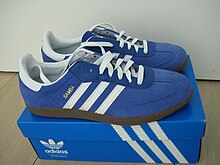Overview of Suede Material
Suede is a type of leather that has a soft, velvety texture, making it a popular choice for various fashion and upholstery applications. This material is created from the underside of animal hides, primarily from lamb, goat, calf, and deer. The distinctive characteristic of suede is its napped finish, achieved by buffing the inner surface of the hide to produce a smooth, fuzzy texture.
Characteristics of Suede Material
Suede is known for its luxurious feel and appearance, often associated with high-end fashion and accessories. Its velvety surface sets it apart from other types of leather, giving it a unique aesthetic appeal. Despite its softness, suede is durable and can withstand regular wear when properly cared for. However, it is more susceptible to staining and water damage compared to other leather types.
Applications of Suede Material
Suede is commonly used in the fashion industry for crafting garments such as jackets, skirts, shoes, and handbags. Its elegant look and comfortable feel make it a popular choice for creating stylish and sophisticated pieces. Additionally, suede is also utilized in upholstery for furniture, providing a touch of luxury and warmth to interior spaces.
Care and Maintenance of Suede Material
Due to its delicate nature, suede requires special care to maintain its appearance and longevity. Regular brushing with a suede brush helps to remove dirt and restore the nap of the material. Stains should be treated promptly with a suede eraser or cleaner specifically designed for suede fabrics. It is essential to avoid exposing suede to moisture or direct sunlight, as these can damage the material.
Environmental Impact of Suede Production
The production of suede involves tanning processes that can have environmental implications if not managed responsibly. Traditional tanning methods may involve the use of chemicals that can be harmful to the environment if not properly treated. However, there are eco-friendly alternatives such as vegetable tanning that minimize the environmental impact of suede production.
Conclusion
In conclusion, suede material offers a luxurious and sophisticated option for fashion and upholstery applications. Its soft texture and distinctive appearance make it a sought-after choice for creating elegant garments and stylish home furnishings. By understanding how to care for suede properly and being aware of its environmental impact, consumers can enjoy the beauty of this unique material while minimizing its ecological footprint.
Citations:
https://en.wikipedia.org/wiki/Suede
Suede (pronounced /sweɪd/ SWAYD) is a type of leather with a fuzzy, napped finish, commonly used for jackets, shoes, fabrics, purses, furniture, and other items.


Suede is made from the underside of the animal skin, which is softer and more pliable than the outer skin layer, though not as durable.
English
Etymology
French (gants de) Suède (“(gloves of) Sweden”)
Pronunciation
- IPA(key): /sweɪd/
- (Scotland) IPA(key): /swed/
- Rhymes: -eɪd
- Homophone: swayed (except Scotland)
Noun
suede (usually uncountable, plural suedes)
- A type of soft leather, made from calfskin, with a brushed texture to resemble fabric, often used to make boots, clothing and fashion accessories.